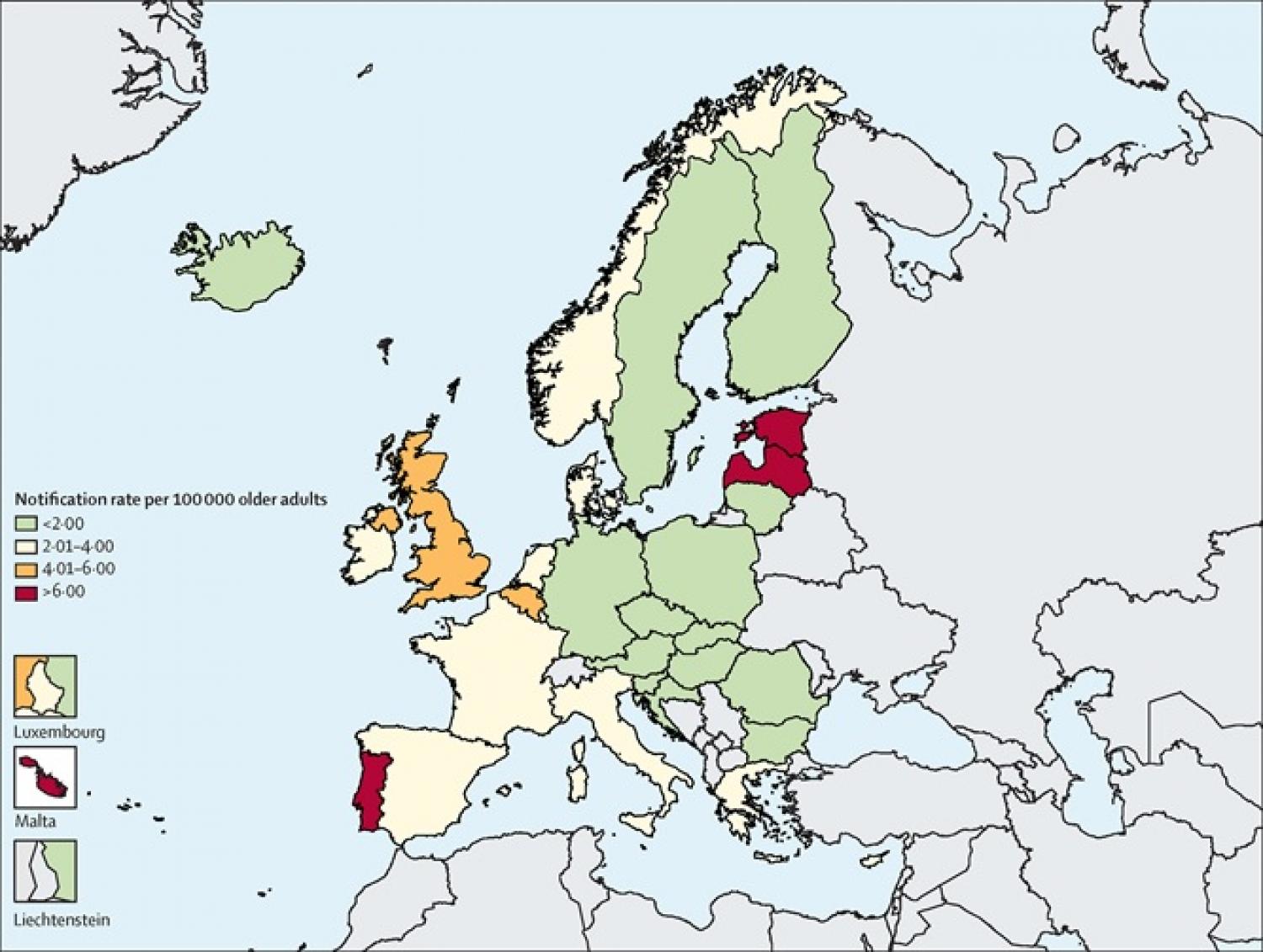
Elsevier, The Lancet HIV, Volume 4, November 2017
Background The HIV burden is increasing in older adults in the European Union (EU) and European Economic Area (EEA). We investigated factors associated with HIV diagnosis in older adults in the 31 EU/EEA countries during a 12 year period. Methods In this analysis of surveillance data, we compared data from older people (aged ≥50 years) with those from younger people (aged 15–49 years). We extracted new HIV diagnoses reported to the European Surveillance System between Jan 1, 2004, and Dec 31, 2015, and stratified them by age, sex, migration status, transmission route, and CD4 cell count. We defined late diagnosis as CD4 count of less than 350 cells per μL at diagnosis and diagnosis with advanced HIV disease as less than 200 cells per μL. We compared the two age groups with the χ2 test for difference, and used linear regression analysis to assess temporal trends. Findings During the study period 54 102 new HIV diagnoses were reported in older adults. The average notification rate of new diagnoses was 2·6 per 100 000 population across the whole 12 year period, which significantly increased over time (annual average change [AAC] 2·1%, 95% CI 1·1–3·1; p=0·0009). Notification rates for new HIV diagnoses in older adults increased significantly in 16 countries in 2004–15, clustering in central and eastern EU/EEA countries. In 2015, compared with younger adults, older individuals were more likely to originate from the reporting country, to have acquired HIV via heterosexual contact, and to present late (p<0·0001 for all comparisons). HIV diagnoses increased significantly over time among older men (AAC 2·2%, 95% CI 1·2–3·3; p=0·0006), women (1·3%, 0·2–2·4; p=0·025), men who have sex with men (5·8%, 4·3–7·5; p<0·0001), and injecting drug users (7·4%, 4·8–10·2; p<0·0001). Interpretation Our findings suggest that there is a compelling need to deliver more targeted testing interventions for older adults and the general adult population, such as by increasing awareness among health-care workers and expanding opportunities for provider-initiated and indicator-condition-guided testing programmes. Funding European Centre for Disease Prevention and Control.
